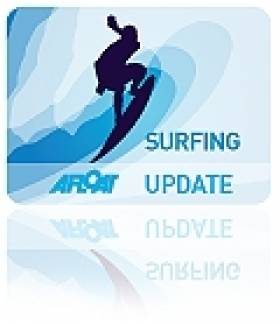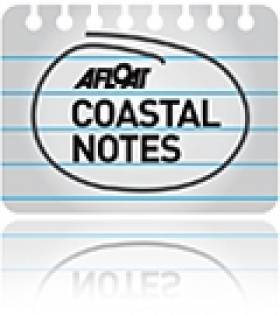Displaying items by tag: West Coast Surf Club
Surfers Welcome New Ruling on Doolin Pier Development
Surfers have hailed the recent ruling by An Bord Pleanála that Clare County Council must reapply for planning permission for its proposed €6 million redevelopment of Doolin Pier.
As previously reported on Afloat.ie, local surfers and the Irish Surfing Association (ISA) had expressed dismay over the current development plans – approved by the council earlier this year – which they maintain would result in the destruction of the "world renowned" waves at Doolin Point and Crab Island.
The Irish Times reports that the council must now resubmit its planning application and prepare and environmental impact statement (EIS) due to the potential impact on tidal and wave patterns in the area, setting back plans for at least a year.
The proposed scheme already has support from the local business community and the Doolin Coast Guard unit, which argues that congestion on the pier in peak tourist periods may interfere with rescue efforts.
A spokesperson for the West Coast Surf Club said that both it and the ISA were available "to meet with the council to progress a mutually agreeable design for the pier".
The Irish Times has more on the story HERE.
Surfers Speak Out Over Doolin Point
Local surfers have expressed their dismay over the decision by Clare County Council to approve the new pier development at Doolin Point.
The Irish Surfing Association (ISA) maintains that even the revised plan - accepted by the council's 32 members following previous objections - would result in the destruction of the renowned waves at Doolin Point and Crab Island.
"I am very disappointed with this decision," Neil Cooney of West Coast Surf Club told Surfer Today. "A great deal of work was put into the West Coast Surf Club and ISA submission but it seems that the issues raised were ignored and brushed over."
He added: "If this development is built as now proposed it would be a catastrophe."
Clare County Council Approves Doolin Development
The controversial €6 million deveopment of Doolin Point has been backed unanimously by Clare councillors.
Clare county manager Tom Coughlan had recommended giving approval for the revised plan, which was submitted after surfers expressed concerns over the impact of the original scheme on waves in the area.
The scheme has already received support from the Doolin Coast Guard Unit and local tourism and business groups.
But according to The Irish Times, the Irish Surfing Association (ISA) maintains that even the amended plans – which move the new pier 25m further away from the surf – would destroy the "world renowned" Crab Island and Doolin Point waves.
The ISA and West Coast Surf Club have warned the council that loss of the waves could cost up to €33 million per year in revenue generated by surf tourism in the area - a concern backed by Fáilte Ireland.
The Doolin Point pier project must be completed by the end of this year in order for the council to draw the €6 million in Government funding required.


























































